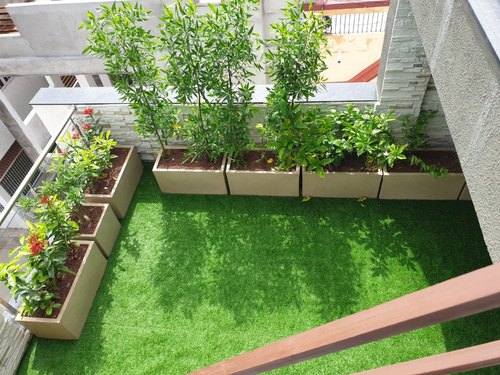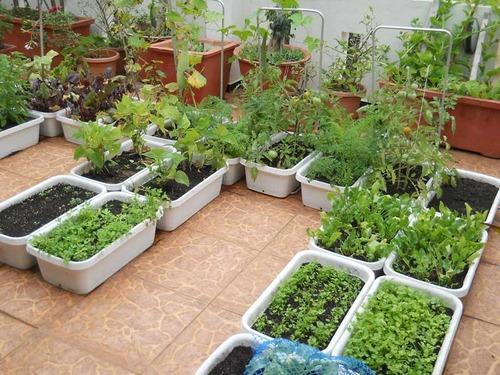The term “terrace garden” can refer to a garden which is established on a terrace, roof, or patio, usually in a house where there is limited gardening space. These types of gardens are especially popular in urban areas, and they are sometimes used in restaurants and other establishments as well. Availability of space is an important consideration for terrace farming. It must be ensured that the terrace receives ample sunlight. If there are areas where the sun is too harsh, you can cover them with a shade, or opt-out of placing your plants there. Baskets, grow bags or even an artificial lawn can be used on the surface of the terrace. If you are looking for an economical terrace garden, grow bags are a better option, but make sure that the bottom of these bags is waterproofed to avoid any leakage into the home. Some vegetables that can be grown easily are beans, tomatoes, chillies, herbs, leafy vegetables and brinjals. If larger space is available you could try climbers and root vegetables. If the terrace is strong with ample space then different fruit-bearing trees can be cultivated by carrying out efficient training and prunning, but always opt for indigenous seeds when doing so. ‘Desi’ seeds can withstand any climatic condition and give you a better harvest. Moreover, they are easily available in the market.

Making your own soil is crucial for terrace gardening. This mix should ideally consist of regular soil, compost coir peat/sand and vermicompost, in equal quantities. It’s important to add the mix to the soil weekly because the nutrients have a tendency of washing away during watering and also rain. Eventually you can create your own compost and even make fertilisers and pesticides from the garden’s vegetable and fruit waste. Watering plants twice a day keeps them hydrated, especially during the summers.
Patience is Key: Experts have repeatedly said that patience is key.Terrace gardening is no rocket science, it’s all about the effort and the care you put into your cultivation. For first-time gardeners, it may be very difficult to go through the initial period of waiting. There’s a high tendency to give up, but the joy of eating a homegrown vegetable or fruit is something else. If much time and effort is put into the garden, then you will get more than what you asked for. Sourcing your soil, seeds and other material from local farmers can really bring down your expenses. With an initial investment of Rs 3,000, anyone can set up their terrace garden. Most of the things required can be sourced easily from nurseries and other organic farms at economical prices.

All such factors make terrace farming a small but powerful tool towards cultivating a sustainable lifestyle. It will make us more close to the nature and help us tackle any scarcity situations in the future. It will also serve as an efficient means of providing the younger generations with a broadened outlook towards where their food comes from.
Pragnya Paramita , Feature Head(Eng) , SHYAMALA SUBARNA
